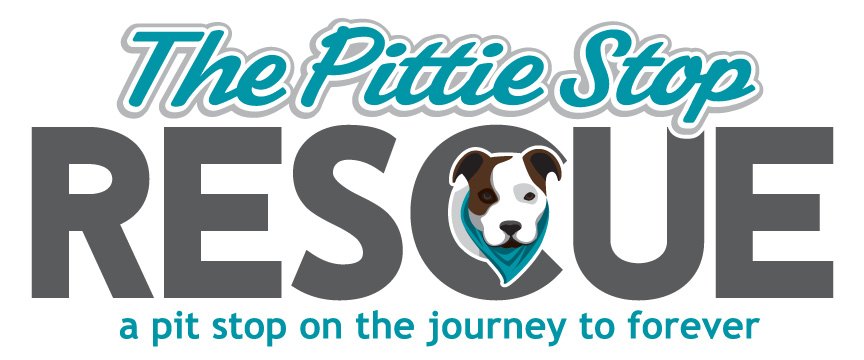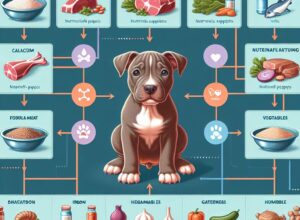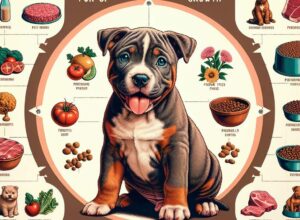
Peak Puppy Nutrition: The 80/10/10 Diet Plan Explained
When it comes to raising a healthy and vibrant pitbull puppy, what you put in their bowl matters just as much as the love you shower them with. The 80/10/10 diet plan isn’t just a fad; it’s a carefully crafted nutritional blueprint designed to mirror the natural eating habits of canines in the wild. This diet emphasizes raw feeding and consists of 80% muscle meat, 10% bone, and 10% organs, providing your pup with a balanced and species-appropriate meal.
Article-at-a-Glance: Quick Snapshot
- Understand the 80/10/10 raw diet composition: 80% muscle meat, 10% bone, and 10% organs.
- Learn why this diet is biologically suitable for your pitbull puppy’s growth and development.
- Get to know the essential nutrients vital for your puppy’s health.
- Discover how to transition your puppy to a raw diet safely.
- Explore sample meal plans and recipes to kickstart your puppy’s journey to optimal health.
The Philosophy Behind 80/10/10
Imagine your pitbull puppy in the wild, thriving on a diet provided by nature itself. That’s the vision behind the 80/10/10 diet plan. It’s grounded in the belief that domestic dogs, much like their wild ancestors, thrive on raw meat, bones, and organs. This diet is rich in protein, essential fatty acids, and minerals, which contribute to strong muscles, healthy bones, and a robust immune system.
- Raw meat provides high-quality protein and essential amino acids.
- Bones are a natural source of calcium and phosphorus, crucial for skeletal development.
- Organs like liver and kidneys are nutrient-dense and packed with vitamins.
By feeding your pitbull puppy according to these principles, you’re not just filling their stomach; you’re fueling their potential.
Breaking Down the Numbers: 80% Muscle Meat, 10% Bone, 10% Organs
Let’s dive into what each component of the 80/10/10 diet plan brings to your puppy’s bowl:
- Muscle Meat: This is the powerhouse of your puppy’s diet, providing the protein needed for energy and growth.
- Bone: Ground or whole, bones are essential for a balanced calcium-phosphorus ratio, supporting teeth and bone health.
- Organs: Often referred to as nature’s multivitamins, organs like liver and kidneys are rich in vitamins A, D, E, and K.
Combining these elements in the right proportions is key to a diet that supports every aspect of your puppy’s development.
Starting Your Pitbull Puppy on 80/10/10
Switching to a raw diet is a big step for your puppy’s nutritional journey. It’s important to make this transition smoothly to avoid digestive upsets and ensure your puppy can adjust to their new diet without any hiccups.
Introducing Raw Foods to Your Puppy
Begin by mixing small amounts of raw food with their current diet. Gradually increase the raw portion over a week or two, paying close attention to how your puppy responds. Look for signs of good digestion and overall health, such as firm stools, a shiny coat, and ample energy.
- Start with easily digestible proteins like chicken or turkey.
- Ensure bones are appropriate for your puppy’s size to prevent choking.
- Introduce organ meats slowly to avoid digestive upset.
Remember, patience is key. Every puppy is unique and may require a slightly different approach to transition.
Calculating the Right Portion Sizes
Portion size is critical, especially for growing pitbull puppies who have specific nutritional needs. A general guideline is to feed 2-3% of your puppy’s expected adult body weight, divided into multiple meals throughout the day. As they grow, adjust the portions accordingly to maintain a healthy weight.
Essential Nutrients for Pitbull Puppies
Nutrition is not just about the major components. Vitamins and minerals play an essential role in your pitbull puppy’s diet. These nutrients support everything from vision to digestion to nerve function. Here’s a snapshot of what’s needed:
Calcium and phosphorus for bone growth, vitamin A for vision, vitamin E for immune function, and B vitamins for energy metabolism.
By focusing on a balanced 80/10/10 diet plan, you’re setting the stage for a lifetime of health and happiness for your furry friend.
Sample Meal Plans for Your Growing Pitbull
Creating a meal plan for your pitbull puppy doesn’t have to be a puzzle. With the right ingredients and a little preparation, you can serve up a diet that’s as delicious as it is nutritious. Here are sample meal plans that align with the 80/10/10 diet principles, ensuring your pup gets all the goodness they need to grow strong and healthy.
Daily Feeding Schedule: A Day in the Life of a Raw-Fed Pitbull Puppy
A consistent feeding schedule is just as important as the food itself. Young puppies generally eat three to four times a day. As they grow older, you can reduce feeding times to twice a day. Here’s what a typical day might look like:
- 7 AM: Breakfast – A balanced mix of raw meat, bone, and organ meat.
- 12 PM: Lunch – Another serving of raw diet, possibly with a different protein source for variety.
- 5 PM: Dinner – The final raw meal of the day, ensuring it includes all necessary components.
Spacing meals evenly throughout the day helps maintain energy levels and supports digestion.
Recipe 1: Chicken-Based Meal
Ingredients: Ground chicken, chicken bones (finely ground), chicken liver, and a dash of salmon oil for omega-3 fatty acids.
Mix these ingredients in the correct ratios to create a simple, chicken-based meal that’s both tasty and full of essential nutrients. The addition of salmon oil helps to ensure a healthy balance of fatty acids.
Recipe 2: Beefy Bites
Ingredients: Lean ground beef, beef heart, ground beef bone, and a sprinkle of kelp powder for trace minerals.
This beef-centric recipe offers a rich source of iron and coenzyme Q10 from the heart. Kelp powder adds iodine and other trace minerals, rounding out your puppy’s dietary needs.
Recipe 3: Variety Mix with Fish
It’s important to introduce variety into your puppy’s diet to provide a broad spectrum of nutrients. This fish-based meal does just that:
Ingredients: Chopped mackerel, ground turkey, turkey bone, beef liver, and a handful of blueberries for antioxidants.
The mackerel is a fantastic source of omega-3 fatty acids, which are crucial for brain development, while the blueberries offer a natural source of vitamins and antioxidants.
Benefits of the 80/10/10 Diet for Pitbull Puppies
Feeding your pitbull puppy an 80/10/10 raw diet comes with a host of benefits that contribute to their overall well-being. Let’s explore how this diet supports their growth and health.
Strong Bones and Teeth
The inclusion of raw, edible bones in the 80/10/10 diet provides a natural source of calcium and phosphorus. These minerals are essential for the development of strong bones and teeth, which are particularly important for pitbulls, a breed known for their powerful jaws.
Glossy Coat and Healthy Skin
- Omega-3 and omega-6 fatty acids contribute to a shiny coat and reduce inflammation.
- Vitamin E supports skin health, keeping it supple and resilient.
- Proteins are the building blocks for hair growth, ensuring a thick and glossy coat.
A raw diet rich in these nutrients can lead to visible improvements in your puppy’s coat and skin, making them look as healthy on the outside as they are on the inside.
Improved Digestive Function
The raw diet is not just about muscle growth and strong bones; it’s a game-changer for your pitbull puppy’s digestive system. Natural enzymes in raw food and the absence of fillers mean easier digestion and more efficient nutrient absorption. You’ll notice smaller and firmer stools – a clear sign of good digestive health.
Overall Vitality and Well-being
A balanced 80/10/10 diet fuels more than just the body; it energizes the spirit. Puppies on this diet often exhibit higher energy levels, better concentration during training, and a general sense of well-being. It’s the kind of holistic health that shines through, from bright eyes to wagging tails.
Making the Switch: Practical Steps and Precautions
Transitioning your pitbull puppy to a raw diet is a significant move that requires careful planning. The key is to go slow and steady, ensuring your pup’s system adapts without stress. Here’s how to make the switch with your puppy’s health at the forefront.
Transitioning from Kibble to Raw Safely
Start by introducing raw food gradually. Mix a small amount of raw meat with their current kibble and slowly increase the raw percentage over time. Watch for any changes in their stool or behavior, which can indicate how well they’re adapting to the new diet.
Handling and Hygiene: Ensuring Safety in Raw Feeding
Raw feeding comes with a responsibility to maintain strict hygiene practices. Always wash your hands before and after handling raw meat, and clean all surfaces and utensils thoroughly. Store raw food at safe temperatures to prevent bacterial growth, and discard any uneaten food promptly.
- Use separate cutting boards for raw meat and other foods.
- Regularly disinfect all food bowls and feeding areas.
- Keep raw food frozen until ready to use, and thaw safely in the refrigerator.
Monitoring Your Puppy’s Health and Growth
As you switch to a raw diet, monitor your puppy’s weight, energy levels, and overall demeanor. Regular check-ups with the vet can ensure they’re on track with their growth milestones and not experiencing any nutritional deficiencies.
Navigating Challenges and Common Concerns
Transitioning to a raw diet can sometimes present challenges, but don’t worry. With a bit of know-how, you can navigate these waters smoothly and keep your pitbull puppy happy and healthy.
Addressing Picky Eating in Puppies
If your pitbull puppy turns up their nose at their new raw diet, don’t despair. Picky eating is often a temporary issue. Try different proteins to find what they like best, and be patient. Once they discover the flavors they love, their appetite will likely pick up.
- Introduce new foods slowly to avoid overwhelming your pup.
- Mix in a little bit of something they love with the new food to entice them.
- Be consistent with meal times to establish a routine.
Raw Diet Myths vs. Facts
When it comes to raw diets, there’s a lot of chatter out there. Let’s clear the air and separate the myths from the facts:
- Myth: Raw diets are not balanced and can harm your puppy.
- Fact: When properly planned, the 80/10/10 raw diet is nutritionally complete and beneficial for your puppy’s growth.
- Myth: Raw meat is unsafe and exposes puppies to bacteria.
- Fact: With proper handling and hygiene, the risk is minimal, and the health benefits are significant.
- Myth: Puppies can’t digest raw food as well as cooked food.
- Fact: Puppies have digestive systems well-equipped to handle raw food, often better than processed kibble.
Understanding the truth behind raw feeding will empower you to make the best dietary choices for your pitbull puppy.
When to Seek Professional Advice
While the 80/10/10 diet is great for many puppies, it’s not one-size-fits-all. If you notice any concerning signs, such as prolonged diarrhea, vomiting, or lack of appetite, it’s time to consult a professional. A vet or a pet nutritionist can provide guidance tailored to your puppy’s individual needs.
Stocking Up: Ingredients and Supplies
Ready to get started? First things first, you’ll need to stock up on the right ingredients and supplies to ensure a smooth transition to raw feeding.
Raw Feeding Essentials Shopping List
Here’s a checklist to help you gather everything you’ll need:
- High-quality muscle meats (chicken, beef, turkey)
- Raw edible bones (chicken necks, turkey gizzards)
- Organ meats (liver, kidneys)
- Omega-3 supplements (such as fish oil)
- Freezer-safe containers for meal prep and storage
- A reliable digital scale for accurate portioning
- Sharp knives and a sturdy cutting board
With these items on hand, you’re ready to prepare wholesome meals for your growing pitbull puppy.
Choosing Quality Meats and Organs
The foundation of the 80/10/10 diet is quality meats and organs. Look for fresh, human-grade options from reputable sources. Organic or grass-fed meats are ideal as they’re often more nutrient-dense and free from unwanted additives.
Storage and Preservation Techniques
Proper storage is crucial to keep raw food safe and nutritious. Freeze meats and organs in portion-sized containers and thaw them in the fridge before serving. Never leave raw food out for too long to prevent bacterial growth, and always keep your puppy’s meals as fresh as possible.
FAQs: Answering Your Top Questions About Feeding Pitbull Puppies
How much should I feed my Pitbull puppy each day?
As a general rule, feed your pitbull puppy about 2-3% of their expected adult body weight per day, spread over multiple meals. For example, if you expect your puppy to weigh 50 pounds as an adult, they should eat about 1 to 1.5 pounds of food daily. Adjust portions based on their activity level and growth to maintain a healthy weight.
Can I mix raw food with kibble for my puppy?
It’s a common question whether you can mix raw food with kibble. While it’s possible, it’s not generally recommended due to the different digestion rates of raw food and kibble. Raw food digests faster than kibble, which can lead to digestive discomfort. If you do choose to mix, do so in separate meals – raw for one meal and kibble for another – to give your pup’s digestive system the best chance to process each effectively.
Are there any ingredients I should avoid in my puppy’s raw diet?
Yes, there are certain foods that should be avoided in your pitbull puppy’s diet. These include:
- Onions and garlic, which can cause anemia.
- Grapes and raisins, which can lead to kidney failure.
- Chocolate, caffeine, and alcohol, which are toxic to dogs.
- High-fat meats, which can be hard to digest and lead to pancreatitis.
- Cooked bones, which can splinter and cause internal damage.
Stick to the recommended raw ingredients and consult with a professional if you’re unsure about a certain food.
How do I know if my puppy isn’t getting enough nutrients?
It’s crucial to recognize the signs that your puppy might not be getting the nutrients they need. Watch out for dull coat, lack of energy, weight loss, and poor growth. If you notice any of these signs, it’s time to reassess their diet. A vet can perform a nutritional evaluation and suggest adjustments to ensure your puppy’s dietary needs are fully met.
What should I do if my puppy reacts badly to the raw diet?
If your puppy is having a negative reaction to the raw diet, such as vomiting, diarrhea, or lethargy, it’s important to act quickly. First, consult your veterinarian to rule out any underlying health issues. You may need to transition your puppy back to their previous diet and reintroduce raw food more slowly, or choose alternative ingredients that are better suited to your puppy’s digestive system.
Remember, every puppy is different, and what works for one may not work for another. It’s all about finding the balance that’s right for your pitbull puppy.
Happy feeding, and here’s to the health and happiness of your pitbull pup!



